When it comes to marketing, knowing your customer and their needs is crucial. To truly make an impact, ads need to be not only well-targeted but more importantly, meaningfully tailored to address specific customer needs at the right place and at the right time in their decision-making process. Effective advertising involves a keen awareness of the conversion funnel and customer considerations at every stage.
Ads have to first grab the attention of the target audience, but also communicate the customer value that the product or service delivers. The most impactful ads go beyond just stating customer benefits – they forge a connection between the customer and the brand that continues throughout the customer journey. Ideally, the ad captures enough attention to generate interest and sustains that interest to create longer-term loyalty. Meeting customers at the correct place and time while simultaneously delivering a meaningful and resonant message is a delicate balance. These nuances have propelled dynamic advertising automation to the forefront of advertising strategies across industries.

Anyone who regularly browses the internet is presumably familiar with personalized advertising. For example, if you decide to browse online for a new pair of sneakers, you likely are going to see ads for sneaker brands populating your browser soon after — it’s not a coincidence! Using automation to create “meaningful” ads goes a step beyond this kind of personalization. It culminates in advertising that acknowledges underlying customer values. For example, the sneaker ad and messaging might change based on whether the customer values a long-lasting and practical shoe or a sleek and fashionable one. How do we know these preferences? Well, maybe this customer has previously searched “highest rated sneakers” or “durable running sneakers”. This action signifies a preference for practicality, as opposed to a “sneaker trends 2021” search.
The automation of meaningful ads synthesizes customer behavior, customer preferences, and personal values to deliver a more effective and less bothersome version of the digital ads we’ve grown accustomed to seeing and often ignore. Advertising automation creates an experience that is helpful as well as enjoyable for the customer.
Conceptually, meaningful ads should be the answer many brands are looking for when trying to connect to their target customer, however, does it work in practice? According to this study, the implementation of meaningful ads caused purchase intent to increase by 15% and click-through rates to increase by 30%. So, not only does meaningful advertising forge stronger brand connections, it also yields tangible and quantifiable results. The same study also found that less than 6% of users had a negative reaction to the level of personalization used in these meaningful ads. This tells us that so long as the ad facilitates a helpful and positive brand experience, the customer will be happy to see their preferences reflected in your ads.
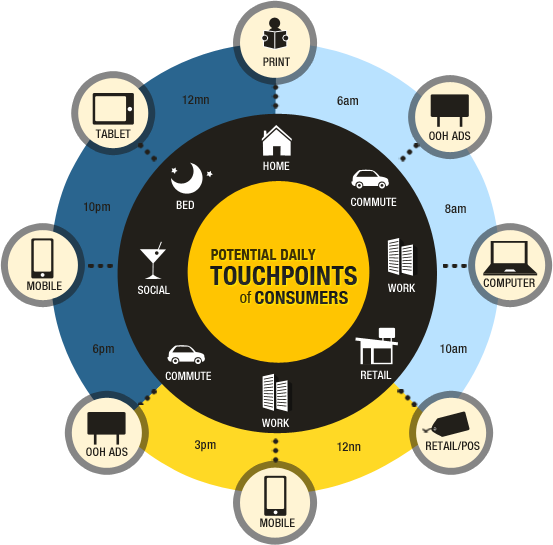
While this data is based on B2C customer behavior, the same mentality can and should be applied when considering B2B ad campaigns. In all cases, ads are speaking to human beings with the capacity to form emotional connections to brands, and the automation of meaningful ads allows that crucial process to occur at scale. All of these insights reinforce one consequential truth – knowing your customer, their needs, their values, and why that matters at each stage of the customer journey is the most important piece of the advertising puzzle. Automating meaningful ads puts that concept into practice and the results will speak for themselves.
Ready for quantifiable advertising success? The first step is analyzing your user personas and unique needs. A marketing analytics agency can help you identify these groups, and find critical insights into their online behaviors. A digital agency can then help turn those insights into actions, and place targeted advertisements that yield conversions.
Contact Bluetext if you’re interested in maximizing your advertising dollars towards real success.
We’re now more than a year into the COVID-19 pandemic and admit it: you miss in-person conferences and events. At least a little. While segments of the country are inching back toward some sense of normalcy, it will be a while before thousands of people are gathered in convention centers and hotel conference centers again.
This continues to pose a challenge for traditionally face-to-face organizations that need to reach business, government, and consumer technology decision-makers. Additionally, it’s why many have been evaluating and participating in virtual technology conferences and events, or even shifting their own user conferences and events from in-person to virtual.
As your organization maps out its 2021 in-person, hybrid, and virtual event strategy, there are several considerations when it comes to investing time, money, and resources.

Is This Their First Rodeo?
Technology providers must determine if the event organizer has hosted virtual events in the past. If they are familiar with the virtual event landscape, it is important to determine what attendance and sponsorship looked like at the previous event and if the speaker lineup has been credible and on target. Determining past event involvement can also help speakers form expectations about participation levels. An experienced virtual event host suggests a deeper attendee pool and gives companies a glimpse at the event at hand by looking at past hosted events.
Pay to Play?
It is important for organizations to evaluate investment in sponsored speaking opportunities or sponsorships overall. Speaking engagements provide companies with a hard-to-come-by platform depending on attendance. Speaking slots with no fee associated can be competitive when you’re submitting with a pool of people to a program with strict standards. Sponsored sessions, on the other hand, are easier to get if you’re willing to pay for it, and give speakers more leeway on what they cover. Because of this, organizations should consider how the event host will drive attendance, especially now that travel doesn’t pose an issue, and how the conference content will be made available to optimize virtual viewership.
Try Not ‘Playing to Play’
When looking for opportunities, there are a few key things to consider before nominating a subject matter expert for speaking roles. Various event organizers offer calls for speakers when looking for guests to participate in panels at conferences. The submission form may offer a broad nomination for a general conference or may offer categories in which specific topics will be discussed. Categories narrow down the specificities of the topic the thought leader will be speaking about. It allows experts to delve deeper into the topic at hand and, in turn, highlights the speaker’s expertise. Finding the right speaking role is important, as is including the right members of the press to listen to a speaking engagement for potential coverage opportunities. Inviting reporters from trade publications specific to an industry, as well as national reporters who cover specific topics are valuable assets to optimize additional press opportunities and increase the overall value of the session.
Host Your Own Virtual Event
While industry events are all reeling from the switch from in-person to virtual, this may be the time to consider hosting your own virtual event – if you are not doing so already. There are more avenues now than ever before to bring customers, partners, prospects, and thought leaders together virtually. Even before the global pandemic, some potential event prospects were limited by the event’s location. With digital events, that is no longer an issue. All an attendee needs these days is a viable internet connection. The importance of convening has not gone away, we just had to change the way we approach it.
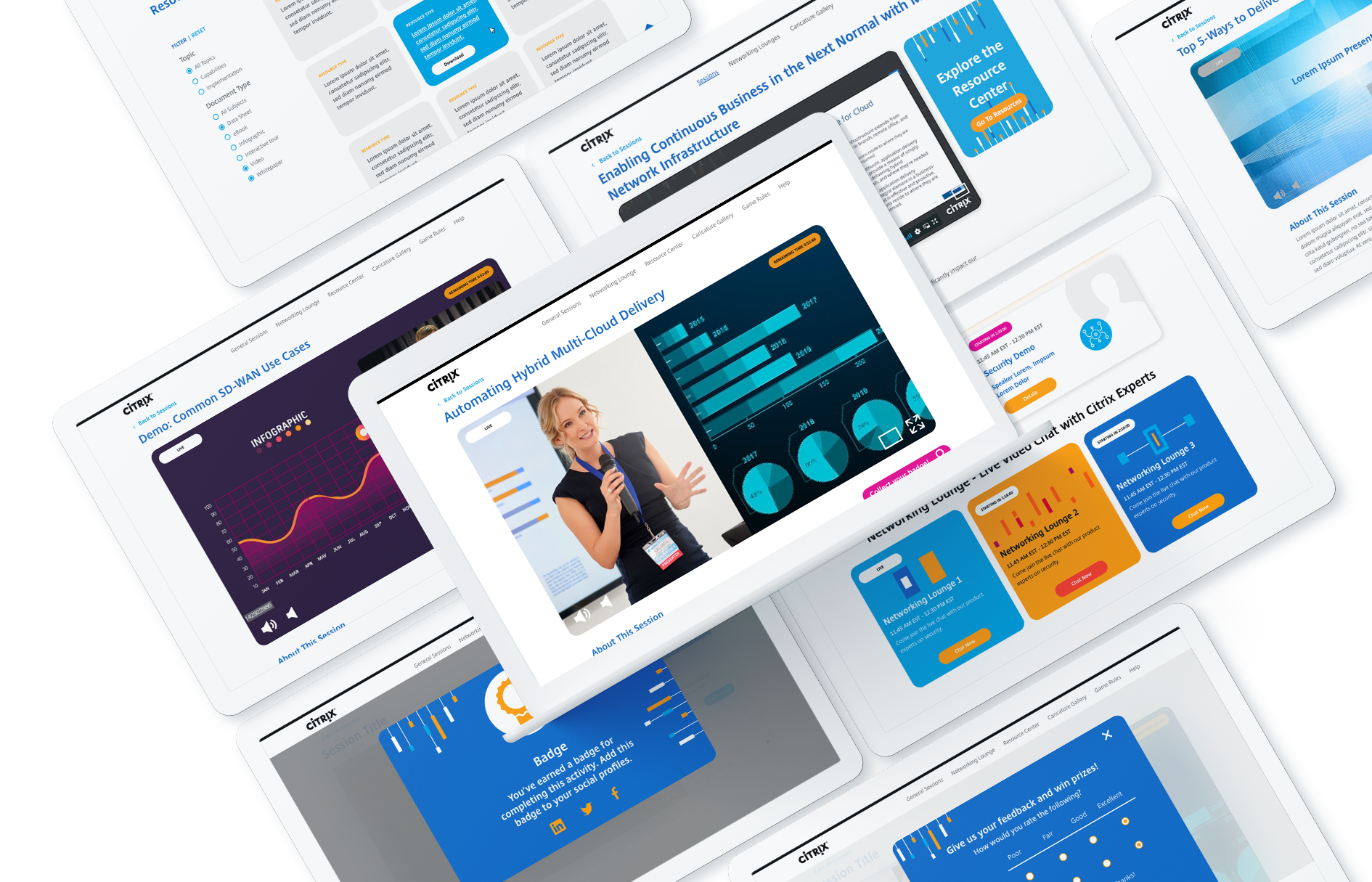
Bluetext Virtual Events are built on the idea that bringing the right people, information, and ideas together is what events are all about. Our platform was designed to feel as close to a real event as possible, rather than just another webinar, video conference, or live stream.
While some may see virtual events as a Plan B to in-person events, virtual events have brought new opportunities to a wider, global audience. Whether you are looking for the right PR agency partner to navigate the virtual and in-person event landscape or leverage our platform to host your own virtual event, Bluetext can help. If you want to learn more contact us today.
Read Part 1 of our Behind the Scenes of Citrix Boot Camp here.
After a tight two-and-a-half-month turnaround, the teams had done it – Citrix Boot Camp: Build a Ready-for-Anything Network was a success! The original goal was met as Citrix hosted a completely seamless and completely virtual networking experience. Citrix was able to offer its attendees the same quality of content and connectivity as an in-person event. This blog will discuss what new-found virtual empowerment means for long-term business goals, but first, Bluetext is proud to share some immediate virtual event tracking metrics…
How Successful Was the Virtual Event?
The Virtual Event platform and marketing campaign delivered an engaging, data-rich and interactive digital experience that the Citrix audience (and revenue stream) loved. On Thursday, August 13th, 2020, Citrix Boot Camp: Build a Ready-For-Anything Network, succeeded in the following ways:
- Unique web visitations: 2,317
- Average page duration: 33:24
- Bounce Rate: 37.9%
- Total page views: 22,608
- Average page views per session: 7.6
Bluetext was able to leverage additional reporting tools including:
- Social Media engagement with an official event hashtag
- Survey data related to the relevance and effectiveness of the speakers, sessions, and resources
- Transcripts from live Networking Lounges Q&A
Why This All Matters for Citrix?
True, the virtual event surpassed the metrics defined by the Citrix team. However, the real success came from the fact that Citrix was able to accomplish this at all! In-person marketing teams had the rug pulled out from under them when lockdown went into effect in Q2 of 2020, but lead gen was expected to continue despite familiar tactics being crippled for the foreseeable future.
Nevertheless, businesses reinvented themselves at every opportunity. A virtual event signifies that brands can keep moving forward, offering delightful digital-first experiences for their audience wherever they are in the world or sales funnel. Connecting people is now harder than ever, but Bluetext’s Virtual Event team helps enterprises build human relationships and drive growth.
Where are they Now?
Bluetext and Citrix are both working hard to continually improve the reach, capabilities, and user experience of the next virtual event. However, the Citrix Boot Camp: Build a Ready-for-Anything Network is still alive and kicking as an on-demand platform through November 14th, 2020.
Interested in learning more about Bluetext’s Virtual Events? Contact Us!
There’s no doubt that the past five months have looked quite different from what we’re used to. Each day, we log onto our computers, join video conferencing lines, and do our best to make this new virtual work-from-home experience feel as in-person as possible. Day to day social situations may have been put on pause, but business certainly has not. Happy hours with coworkers? Via Zoom. Pivotal presentations with clients? Via WebEx. In-person large events and seminars? We have a solution for you.
Just two short months ago, Citrix turned to Bluetext to help bring one of their networking events into a completely virtual space. The Citrix team had one goal: create a seamless virtual experience that provided the same quality of content and connectivity as an in-person event.
With only six short weeks to build a fully custom microsite complete with new, event-specific branding, Bluetext hit the ground running.
First, came the wireframes. In order to fully understand the user journey, the Bluetext UX and design team worked closely with Citrix to understand their virtual event goals, which included providing a seamless user journey and navigation. Just as each in-person event has a lobby, there needed to be a ‘home dashboard’ where users could easily access all relevant sessions on the day of the event. With a maximum of eight general sessions, we explored a few different possibilities for displaying the session information.
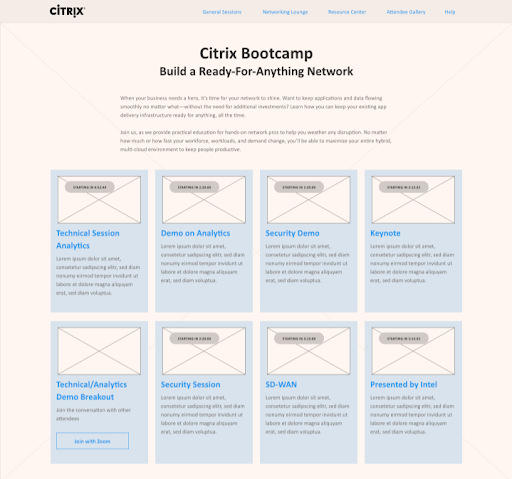 Ultimately, we landed on our two-column grid with a featured keynote session. This enabled us to include as many relevant details as possible, including a countdown clock that would show a user how much time was remaining until a certain virtual event session begins. Think of an in-person event: any attendee would have been provided an agenda of events, along with locations and maps. The same guidance and resources need to be readily accessible in a virtual event. Through the selected UX, the homepage of Citrix Boot Camp could provide a high-level overview of the event’s itinerary. We explored a grayed-out ‘completed’ state for each session, which gave users the signal that the session has completed.
Ultimately, we landed on our two-column grid with a featured keynote session. This enabled us to include as many relevant details as possible, including a countdown clock that would show a user how much time was remaining until a certain virtual event session begins. Think of an in-person event: any attendee would have been provided an agenda of events, along with locations and maps. The same guidance and resources need to be readily accessible in a virtual event. Through the selected UX, the homepage of Citrix Boot Camp could provide a high-level overview of the event’s itinerary. We explored a grayed-out ‘completed’ state for each session, which gave users the signal that the session has completed.
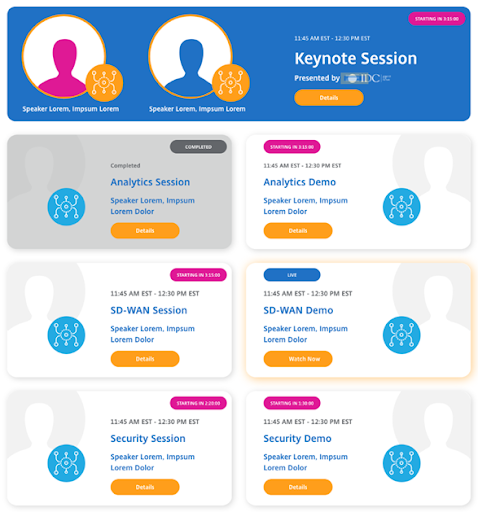 Not only was it important to create simple and seamless UI and UX that would provide all registrants an intuitive experience, but it was just as important to make the event feel as lively as possible. With no physical event staff to welcome, direct, or answer questions, the website had to serve any and all personal touches one would expect. Bluetext designed a pair of pre- and post-event thumbnails to display before and after the live video play to transform the event microsite into an exciting and lively virtual space for all registrants.
Not only was it important to create simple and seamless UI and UX that would provide all registrants an intuitive experience, but it was just as important to make the event feel as lively as possible. With no physical event staff to welcome, direct, or answer questions, the website had to serve any and all personal touches one would expect. Bluetext designed a pair of pre- and post-event thumbnails to display before and after the live video play to transform the event microsite into an exciting and lively virtual space for all registrants.
Once we had a beautiful site ready for build, our team began to work through a major development goal of the site: the live-video playback. Our team leveraged the Zoom integration to provide live Q&A sessions for registrants to engage directly with Citrix representatives. This gave users the traditionally intimate networking experience that is generally lost when transitioning events into the digital world.
Read Part 2 of our Behind the Scenes of Citrix Boot Camp here.
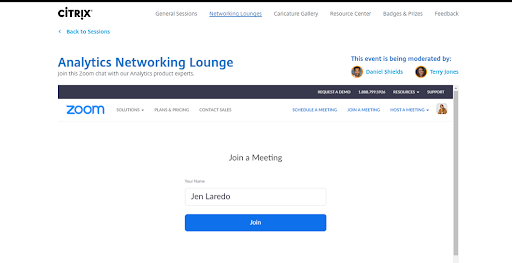
Looking to reinvent your company’s event experience? Bluetext can help. Contact us today.
In recent years, leading branding firms and marketers have used brand storytelling to create interactive and empathetic experiences for users throughout their purchase journey. By creating a relatable experience, users see brands and companies as groups of real people working to solve real issues rather than faceless entities. Although popular with many B2C companies, brand storytelling in the B2B world is not only possible but encouraged! In fact, 50% of B2B buyers are more likely to buy if they can connect emotionally with the brand they’re buying from.
As a leading branding firm, we’ve worked with countless companies to use brand storytelling as a way to humanize and socialize their messaging. Keep reading to learn more about how B2B companies have used storytelling to humanize their messages and how a leading branding firm, like Bluetext, can help you craft yours.
Hewlett Packard
Many B2B companies run into the same issue when crafting their brand’s story: density. For many enterprises, educating users on their products and services can seem daunting – but it doesn’t have to be. In their “The Wolf” video, HP addresses a topic that, to many, is seemingly dry and unexciting. With thoughtful execution, however, HP was able to create an attention-grabbing and informative video with Hollywood’s favorite good vs. evil plotline. By creating this short film, HP was able to engage with their audience and create a malicious character that represents the issues companies without printer security face.
With a leading branding firm, companies can work to not only get their brand’s story and message in front of the right people at the right time, but they can do it in a way that grabs the prospect’s attention.
Paya
When Paya – a revolutionary payment solution software company – needed a leading branding firm to help refresh their visual strategy, brand ecosystem, and CVI, they turned to Bluetext. As a part of this brand evolution, Bluetext and Paya worked together to highlight Paya’s mission and goals, through the eyes of their star team.
By introducing their various offices, employees, and everything in between, this story gives users a look past Paya as a corporation and demonstrates the motivated and gifted individuals working together to solve various customer problems. By exemplifying their strong corporate culture, businesses further found Paya as a reliable and trusted partner.
Varonis
Varonis turned to Bluetext to help position the company with C-level executives who are unaware of their enterprise risk by not leveraging solutions to understand who has access to the data their enterprise relies on. Together, Bluetext and Varonis created a two-part campaign to highlight enterprise exposure of sensitive information and to educate executives on insider threats.
By infusing these campaigns with humor, our teams were able to elicit a positive response from viewers, while staying true to the principles of Varonis’ overarching message.
Zendesk
For new brands especially, finding the right story to tell can be very difficult. B2B storytelling doesn’t always need to be real. Zendesk, for example, created a fake, semi-grungy band named “Zendesk Alternative” and even created a website for the band. By using this direction, Zendesk was able to bring more users to their website and further educate them on the problems Zendesk is solving. This approach, although certainly nontraditional, was widely appreciated by users for being so out of the box and unexpected.

With thoughtfully planned out and carefully executed campaigns, we’ve been a part of some of the biggest successes in brand storytelling. A good story is multi-layered and lets your audience know more about your brand and what it stands for. By sharing your brand’s story, you let your current and future customers see your company as a group of hard-working, motivated people who are committed to solving inefficiencies and business problems.
Interested in working with a leading branding agency to help tell your story? Contact Us!
Your website acts as an essential business tool — used across every industry for a diverse number of functions. B2B companies rely on their websites to generate leads, phone calls, or physical location visits. No matter what function your website serves, there is one universal goal every business wants to accomplish with its website: leveraging it to create more growth.
There are several ways to increase your leads, sales, and revenue without investing in a complete redesign and rebuild. A great website will enable your team to work smarter, not harder. Here are tips that you should consider trying — while simple, they can help your business grow significantly.
1. Responsive Design
Mobile accounts for over half of global website traffic; if your site isn’t mobile-friendly, you may be losing valuable leads. In the coming years this number will only increase, and ensuring a mobile-friendly design may be crucial to your future success. A responsive website design (RWD) adapts to fit any screen in a way that makes all pages, features, and actions accessible to users. Making sure that your website can support traffic on any browsing device ensures that users are not dropping off your site because they cannot access what they’re looking for.
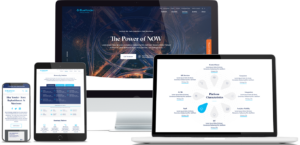
2. Simplify Your Navigation
In order to increase conversions, you need to keep users on your website. When a user lands on your website, they should be able to quickly and intuitively navigate to relevant content, allowing them to find the information they need without losing interest. The first step to keeping a user on your site is maintaining a simple and intuitive navigation. Too many options will likely overwhelm your user; it is important to have a clear path for users to the action you would like them to take as well as the information they are looking for. Otherwise, they may look elsewhere.
3. Avoid Clutter and Complex Noise
While incorporating animation and motion on your website adds visual interest for users and helps your site stand out, it’s important to be aware of the balance between unique design and overly-complex noise. Too much movement can be overwhelming for your user and may detract from what they originally came to your website to achieve. A complex design can also negatively impact your site speed, potentially increasing bounce rate and affecting your SEO score. While finding a middle-ground between these two extremes can be difficult, it’s important to ask if new design elements will add value to the end-user.
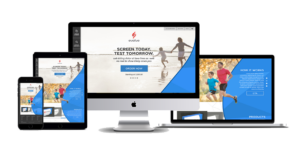
4. Don’t Go Crazy With Your Fonts
While fonts are an easy way to enhance your CVI and bring visual interest to your website, they may also be difficult to read for some users or on some devices. Using a Sans Serif font for your website’s body copy and making sure the font size and color meet accessibility standards is crucial in getting your message across to users. If they are not able to read the content on your site, they definitely won’t be converting.
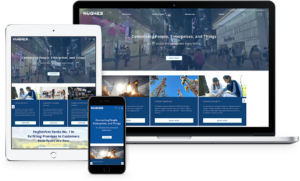
User experience is crucial to effective website design, but so is your internal team! Here are some tips to streamline the digital sales process for end-users and internal teams. A positive user experience will directly translate into increased conversions.
Use Call Tracking
If driving users to make a phone call is one of the main goals of your website, it is important to know which page has prompted the user to make the call. You can easily track this information by using unique phone numbers on different pages, allowing you to determine which page is driving the most traffic to your call center. These numbers can easily be configured to route to your main phone line, meaning there won’t be any disruption to the way you’re currently handling phone leads.
Install Live Chat
While live chat may not seem immediately relevant to your business, every website can benefit from this simple tool. Live chat functions to facilitate interactions with your users and enables them to quickly get the answers they’re looking for without spending too much time hunting around the site. Many chat services will also integrate with mobile phones, allowing your business to easily monitor traffic.
To learn more about driving leads via a responsive UX design and how Bluetext can help you increase conversion rates, contact us today.
Have you ever found yourself on a website, staring blankly at the screen wondering where the rest of the pages are? Navigation is one of the most important functions of any web page whether it be a blog, product listing page, about section, or a document library. If your user doesn’t know where this content is housed, the utility of the information is lost! As a crucial element of user experience, failing to build smart navigation into your digital interface can lead to a variety of issues including secondary UX issues, accessibility problems, and increased bounce rates from frustrated users.
Let’s take a step back; what is a navigation menu, and do I still need one if I have “search”?
Navigation menus are maps of the categories or features of your content; on websites, these are known as sitemaps. These menus can appear in a variety of ways; from the traditional header locked navigation bar, to hamburger menus that pop out to link to various interior pages of a website.
While many websites have a Search function of some kind, whether it be a search bar or filter, research shows that 70% of users rely on navigating to content directly. While search features are helpful to some users, navigation menus can lead your visitors to the content they need quickly and reliably.
No matter where you are with your website, here are some quick, easy tips to help you optimize your platform for a better user experience.
1. The 3 Click Rule
Your navigation structure should be intuitive and allow users to land on any page and find what they are looking for in 3 clicks or less.
If your site has lots of content and sub-pages that relate back to a greater unifying category, take advantage of breadcrumbs. Breadcrumbs are a component of navigation menus that help users orient themselves within a sitemap. They can be embedded into the navigation bar as a dropdown, or appear in the design of the child pages on your site to guide users through the various layers of content.
2. Show Off Your Menu
Don’t try to reinvent the wheel-don’t hide your navigation menu! When a user visits your site, it’s likely one of the hundred other web properties that they have browsed in the last few days. As our digital lives have progressed, users have become accustomed to certain kinds of queues and user interface (UI) elements. Keep your navigation menu in an intuitive location, be that the left rail, top of the browser window, or a pop-out hamburger menu with an obvious icon.
3. State the Obvious
Be as clear and descriptive as possible. Avoid using vague descriptions in your navigation headings. If a user can’t tell exactly what to expect from a page in the navigation, there’s a chance they won’t make it past the landing page. Use descriptive language to identify what your pages contain, less is more with heading titles. Streamline the main menu display experience where possible and take advantage of dropdown menus for categories with multiple child pages. If you hyperlink to pages within your site from banners or in-line content, make your hyperlinks obvious!
4. Stay on Topic
Don’t let SEO impact your navigation taxonomy. While ranking well in search engines is important, packing your Headers and menu items with keywords that don’t relate to the page contents won’t do you any favors with users. Avoid this common pitfall by using the copy and metadata on your pages for SEO strategies, leave your headings and menu items clean and accurate for better UX.
5. Lead with a Mobile-First Mentality
Over 53% of all web traffic occurs on mobile devices. When designing your navigation menu, start by thinking about how users might visit the site; on both their computers and mobile devices. Take advantage of responsive designs that can adapt to a variety of browsers and devices rather than discovering post-launch that your navigation is broken.
6. Stop Guessing! Test Your Audience
If you’ve updated your navigation menu but still see disappointing numbers for bounce rate and click through on your site, test your experience. User behavior can be monitored with tests such as a Crazy Egg Heatmap, which illustrates where your users are browsing on the page.
TLDR: improving your navigation design can improve your relationship with users
Confusing or obscure navigation will lead to fewer visitors to your interior pages and can result in awful analytics reports. Clear and effective navigation can enhance visitors understanding of where your content is located, instill confidence in browsing your site, and create credibility about your product.
Do you need to up your navigation game but you’re not sure where to start? Get in touch with us.
The recent COVID-19 outbreak has had ripple effects across almost every industry. Around the world, the global pandemic has altered the way we live, socialize and even conduct business. In this unprecedented scenario clouded with uncertainty we all, especially digital marketers, are wondering: What needs to change? And how drastically?
When it comes to search engine optimization strategies, digital marketing and content agencies are continually researching the latest trends and evolving best practices. In the current environment, the role of a top digital marketing agency is to keep a pulse on the present, while also looking forward to strategies that will drive long-term success. Here at Bluetext, our digital marketing analysts are harnessing a variety of tactics to support overall business goals and serve users the best we can during these uncertain times. Check out the top ways we’ve been monitoring and optimizing around current events.
Strength in Numbers
When in doubt, trust the data! Using top marketing analytical tools, such as SEMRush and Moz, one can track the aggregate behavior of online users. Gathering the most up to date data can be tricky, so don’t do it alone. The more expertise and tools, the better. Trust a marketing analytics agency to help break down the numbers into a comprehensible story of website traffic. Use professional tools, such as Google Analytics and Google Search Console, to monitor the recent fluctuations in your page traffic. Do a keyword analysis of your current keyword list to see if search volume has shifted. Google Trends page is a great tool to identify emerging patterns. Are there new phrases your customers are searching for? If the language has evolved, so should your SEO strategy. If you have chatbots for customer service transcripts, these can provide valuable insight into current needs.
In short, the data doesn’t lie. Businesses need to understand search traffic shifts to get as clear as possible a picture into whether to pivot your SEO strategy or not.

Content is King — Still
Ultimately any changes to your SEO strategy should be driven by your unique business needs. For example, a brick and mortar store will need to cater to how they can serve customers at home. If your business was already available online, you may be experiencing altered user behavior as people spend more time at home and online. Every business should ask: “Is the content relevant to current needs?” Your messages may need to shift in sensitivity to the current environment. A complete overhaul is not necessary, nor appropriate. However, if there are opportunities to generate new content that supports your users in a unique time, do so. And if your business is considered essential or has been significantly impacted, you should create a dedicated page to capture all relevant coronavirus traffic. Keep the page simple, focused and sensitive. Don’t try to provide the latest breaking news, but exactly what and how your company is doing. If your business has been minimally affected, perhaps there is an opportunity to contribute to emerging conversations. Exploding Topics is a valuable tool for up-to-date trends across search engines and social media mentions. At the end of the day, users are seeking timely and accurate information now and long after the dust has settled on this pandemic.
 Optimize Often
Optimize Often
Search engine optimization is never a “one and done” task. Any digital marketing strategy requires upkeep as is the nature of the evolving industry. Now, more than ever, flexibility is paramount to staying afloat. Be proactive, be vigilant. SEO strategy will need re-evaluation in the upcoming weeks and months. No one can predict how long the pandemic will last so you must be ready to pivot to any new or resurging customer needs.
In an unpredictable environment, one thing is certain: this is our new (remote) reality. Don’t expect old strategies to work as they once did, and don’t expect this shift to “blow over soon”. Your business should be prepared to remain relevant now more than ever. There will likely be long term implications in behaviors and business operations. Get behind the shifts now and flex your agility. It will pay off in your long term business health.
If you’re looking to partner with an agency to pivot your SEO strategy, let us know.
As of late, communications have been drastically changing, and companies have had to adapt quickly and swiftly to accommodate the current COVID-19 environment. It is a new and unprecedented scenario, forcing flexibility and fast thinking to all aspects of the business. As work-from-home policies and entirely virtual communications surge, recruitment strategies have been greatly impacted. How a company reacts to this digital shift and adapts various business models is crucial to future success following the return to normalcy.
Improving Remote Recruiting & On-Boarding
Learning how to better recruit and virtually onboard, not only during COVID-19 but throughout a company’s entire lifespan, is essential. It demonstrates your company’s ability to stay flexible, proactive, and conform to different comfort levels.

Have a Convincing & Personalized Careers Page
Virtual recruiting isn’t a novel idea. Companies have been trying to actively attract new talent online for years. However, in order to get a great pool of new hires, you need one thing: an outstanding career section on your website. Your career section is the portal for all potential new employees to investigate your company, culture, benefits, growth opportunities, and what you are all about. This is your first impression to prospective employees, who are most likely browsing opportunities at multiple companies! The main mission of a career section is to make the biggest impact in the shortest amount of time. How do you do this? With the proper targeting.
Proper targeting isn’t all about spending large sums of money on paid media. It’s important to utilize your current resources and current employees to create a lasting campaign. Centauri, a technology-driven company providing high-end, creative software and engineering solutions to critical national security missions, came to Bluetext wanting a recruitment-focused campaign. Looking at the diversity in the age, specialty, race, gender and backgrounds of current employees, Bluetext created a range of different personas. Backtracking to Marketing 101, persona creation is a critical step in marketing to the right audience. It’s crucial to know a user’s specific goals, interests, and motivations. For example, a young college graduate student will have different goals versus an experienced middle-aged military veteran. By creating personas, potential employees are able to connect more with someone that closely resembles them. For proper targeting, personalization is key. The career section should play into all personas, create hyper-specific content and show the user relevant jobs pertaining to them. Sound like a lot of legwork? Digital marketing agencies, such as Bluetext, are experienced and proficient in persona creation and targeting strategies.
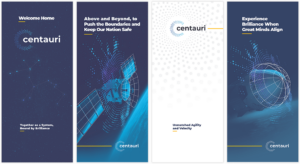
Leverage Alumni Networks
Another great way to better recruit qualified candidates is to create an Alumni Network. This can take many forms, with the most popular being an informal social media group harnessing Facebook or Linkedin). This creates a space for alumni to connect with others, share thoughts, and best of all, provide valuable leads. Not only are you getting free referral lead generation, you nurture an excellent relationship with the company even after the employee has left. It creates brand ambassadors who are constantly promoting your company in a positive light, possible future business partners, and topnotch re-hires.
Institute a Welcoming Virtual Onboarding Process
While virtual recruiting was surging in popularity even before COVID-19, virtual onboarding is relatively new. Companies like Amazon have already begun to virtually onboard thousands of new hires to keep up with higher demands. The biggest concern for most employers is exactly how to bring a newly-hired employee into the company and properly integrate them.
Onboarding is the first time a new employee gets a true first impression of the company in action. Maybe new hires came into the office to interview, but this is the real introduction to the nit and grit of day to day tasks. The first day typically involves numerous face-to-face meetings and handshakes–both no longer possible amidst the COVID pandemic. When virtually onboarding, It’s important to utilize scheduling software, internal communication platforms, and video conferencing tools in order to keep the initial introductory phase as personal, engaged, and genuine as possible. This is especially important for one-on-one meetings with direct managers.

Being able to leverage current new-hire learning processes virtually is a huge focus as well in the current environment. Do your new hires get a “Welcome Binder?” Replace that with a consolidated folder filled with the online version. Do you typically run through various Powerpoints with your new hires? Think about translating those into short, educational shared videos. Are there various informational sessions for new hires? Leverage video conferencing and screen sharing tools. Translating your in-person process to online can be done by almost anyone. In fact, the more people involved the better! Have multiple employees help create onboarding videos so that new hires get introduced to a wider breadth of the company.
The main goal of your virtual onboarding should be to make the new hire feel comfortable. Make sure to over-communicate and offer assistance as much as needed. Be sure they are understanding expectations laid out and asking questions when they feel confused. Make sure they get proper introductions, are included in virtual activities, and let them truly shine.
Virtual recruiting and onboarding are of utmost importance right now, but companies will benefit by taking advantage of these now and implementing these processes for all future recruiting and onboarding processes and the industry shifts. At Bluetext, there is no limit to the amount of success we can help you achieve. To learn more about our processes and to see our work, check out our case studies.
Ready to partner with Bluetext to achieve your marketing goals? Schedule a call with us today.
- The COVID-19 Pandemic has expanded the “stay at home” audience for B2B businesses.
- The commercial sector has seen changes in how audiences are reacting to content and consuming media.
- Capturing these audiences will require businesses to adapt content and tactics to the current climate.
Over the past few months, we have all adjusted to new living and working environments. This means varying working hours, virtual gatherings and different web surfing, streaming and social networking habits. These changes have shifted the traditional marketing audience profile.
If your business is B2B, you should be aware of these audience changes and adapt your marketing tactics to keep up with the current trends. Here are a few ways that you can make sure your message doesn’t fall flat with the new “stay at home” audience.
If your business is more B2B and your target audience is a specific position type in a company, your audience might have shifted even more than a typical consumer audience. Now, instead of doing research at work, many employees are browsing, doing research and consuming media at all hours at home. This can make it more difficult to target by company IP address, for example, but can make it more likely that you get valuable leads from social media sites like Facebook and LinkedIn.

The common threads that businesses are searching for during this time are supply chain management, eCommerce, website tips and management, point of sale transactions and financial support. Focus not only on your value add for customers, but also on the unique ways you’ll support them during this time.
Lift the Gate!
Just like consumer-focused businesses, it’s a good idea to offer some sort of additional value for business customers. It can be a draw for businesses to find free thought leadership content or resources on your site – even if it’s content that you would normally have gated.
Shifting Media Channels
For B2B businesses, digital media channels are seeing a serious uptick in volume and inventory. This shift may be an even greater shift for B2B industries as channels are seeing more traffic from business-people who would normally not be as active on social media in the middle of the day.
Another result of this pandemic is that trade shows and conferences have been canceled or are going virtual. With 53% of B2B marketers considering in-person events and tradeshows an effective channel for driving conversion according to eMarketer, this can be an important change to take advantage of. Many businesses (28% according to Smart Insights) are putting a positive spin on this shift and reinvesting trade show budgets into digital advertising.

Target Audience Hours
The shift to remote work has made it more likely that employee’s hours will shift from the traditional 9-5. This provides a unique opportunity for hour extensions for both B2C and B2B campaigns.
While no one is positive how long the effects of this pandemic will last, it is clear that the stay at home orders are changing how both consumer and business audiences are consuming media. Businesses must adapt to these changing audience behaviors and characteristics, not only to survive now but to better understand and cater to their target customers in the future. Need help capturing your changing audience? Call Bluetext.
 Optimize Often
Optimize Often